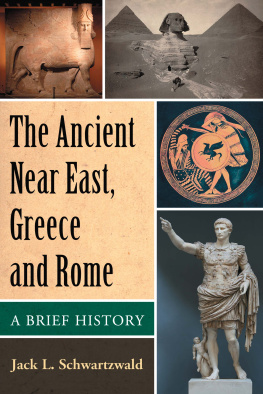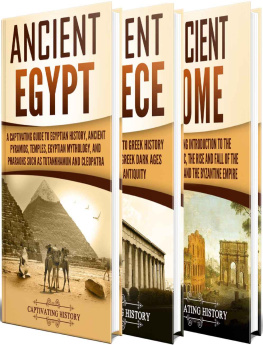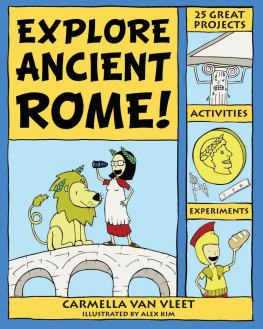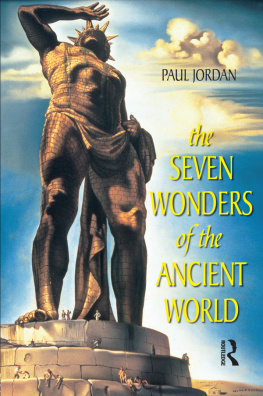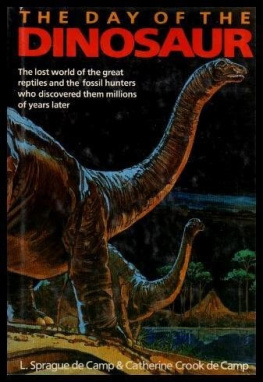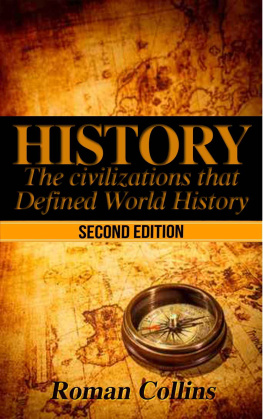THE ANCIENT ENGINEERS
Books by L. Sprague de Camp
Historical Fiction:
An Elephant for Aristotle The Bronze God of Rhodes The Dragon of the Ishtar Gate
Science Fiction:
Lest Darkness Fall
Divide and Rule
The Wheels of If
Genus Homo (with P. Schuyler Miller) Rogue Queen
The Continent Makers
Sprague de Camps New Anthology Cosmic Manhunt
The Tower of Zanid
The Glory That Was
The Search for Zei
A Gun for Dinosaur
Fantasy:
The Incomplete Enchanter (with Fletcher Pratt)
The Land of Unreason (with Fletcher Pratt)
The Carnelian Cube (with Fletcher Pratt)
The Castle of Iron (with Fletcher Pratt)
The Undesired Princess
Tales from Gavagans Bar (with Fletcher Pratt)
The Tritonian Ring
Tales of Conan (with Robert E. Howard)
The Return of Conan (with Bjorn Nyberg) Solomons Stone
Wall of Serpents (with Fletcher Pratt)
Non-fiction:
Inventions and their Management (with Alf K. Berle)
The Evolution of Naval Weapons
Lands Beyond (with Willy Ley)
Science-Fiction Handbook
Lost Continents
Inventions, Patents, and their Management (with Alf K. Berle)
The Heroic Age of American Invention
The Ancient Engineers
Juvenile:
Engines
Man and Power
Energy and Power
Man and Life
THE ANCIENT ENGINEERS
L. SPRAGUE DE CAMP
Barnes & Noble Books
Several sections of this book have appeared as articles in Fate, Isis, and Science Digest, for which permission to use is gratefully acknowledged. Permission also is gratefully acknowledged from the British Museum, the Deutsches Museum of Munich, the Illustrated London News, the Metropolitan Museum of Art (New York), Guido Ucelli, the University Museum of the University of Pennsylvania, and the Vorderasiatisches Museum of the Staatliche Museen zu Berlin for permission to reproduce the photographs and paintings duplicated in the plates. Plate XIX, an illustration by John Christiansen from Heavenly Clockwork by Joseph Needham, Wang Ling, and Derek J. de Solla Price, is reprinted by permission of Cambridge University Press.
We are grateful to the following publishers for permission to use excerpts from their copyrighted publications: Cambridge University Press for material from Heavenly Clockwork by Joseph Needham, Wang Ling, and Derek J. de Solla Price; The Clarendon Press, Oxford, for material from The Legacy of Egypt by S. R. K. Glanville and Aristotles Mechanics, On Marvelous Things Heard, and Politics; Dodd, Mead & Company for six lines from Lepanto from The Collected Poems of G. K. Chesterton, copyright 1932 by Dodd, Mead & Company; Harvard University Press for excerpts from The Loeb Classical Library; Charles Scribners Sons for material from Technology by Friedrich Klemm; Springer-Verlag for material from The Engineering Techniques in Ancient History by Curt Merckel; The Williams & Wilkins Company for material from Engineers and Engineering in the Renaissance by William B. Parsons.
Copyright 1960, 1962, 1963 by Sprague de Camp
All rights reserved.
This edition published by Barnes & Noble, Inc., by arrangement with Spectrum Literary Agency
1993 Barnes & Noble Books
ISBN 0-88029-456-6
To my wife and collaborator,
Catherine Crook de Camp
PREFACE
The system of indicating dates in this book is based upon those used by the late George Sarton in his History of Science and by Joseph Needham in his Science and Civilisation in China. Centuries are indicated by Roman numerals preceded by + or - according to whether they are centuries of the Christian era or b.c.; hence -VIII means eighth century b.c. Years are treated likewise, with Arabic instead of Roman numerals; for instance, +412 = a.d. 412. The plus sign is, however, omitted from years after +1000, because the meaning of the numeral is obvious in such cases.
In the text, most Greek names are spelled in the Greek manner, instead of the Latin (hence Keraunos instead of Ceraunus) because I like it better and think it will in time prevail. But in the notes and bibliography, most names of Greek writers are given in Latinized or Anglicized form to make it easier to find standard editions and translations.
For help in one way or another with this workprocuring books for me, answering questions, checking my translations, and criticizing parts of the textI am grateful to Allen T. Bonnell, Lionel Casson, Jack Coggins, Bern Dibner, Caroline Gordon Dosker, A. G. Drachmann, I. E. S. Edwards, R. J. Forbes, Umberto Forti, Samuel Freiha, Samuel N. Kramer, Willy Ley, William McDermott, Robert P. Multhauf, Derek J. de Sofia Price, Pellegrino Claudio Sestieri, Guido Ucelli, Donald N. Wilbur, Howard H. Williams, and Conway Zirkle; and to the Burndy Library (Norwalk, Conn.), the Swarthmore College Library, the Union Library Catalogue, and the University of Pennsylvania Library. Finally, my wifes work of editing the manuscript has gone far beyond the call of duty.
L. Sprague de Camp
THE COMING OF THE ENGINEERS
ONE
Civilization, as we know it today, owes its existence to the engineers. These are the men who, down the long centuries, have learned to exploit the properties of matter and the sources of power for the benefit of mankind. By an organized, rational effort to use the material world around them, engineers devised the myriad comforts and conveniences that mark the difference between our lives and those of our forefathers thousands of years ago.
The story of civilization is, in a sense, the story of engineeringthat long and arduous struggle to make the forces of nature work for mans good. The story of engineering, pieced together from dusty manuscripts and crumbling relics, explains as well the state of the world today as all the accounts of kings and philosophers, generals and politicians.
To appreciate the accomplishments of the engineers, we must understand the changes that have taken place in human life during the last million years. A million years ago, at the beginning of the Pleistocene Period, our ancestors were small, apelike primates, much like the manapes whose fossil remains have been found in Africa.
Two things distinguished our ancestors from modern apes, such as the gorilla and chimpanzee. First, they lived mostly on the ground and regularly walked upright, so that their limbs were proportioned much like ours. They did not have the long hooklike arms, the short bowed legs, and handlike feet of modern apes. Their brains were essentially the same as those of modern apes.
Probably as early as 100,000 years ago, before the last advance of the Pleistocene glaciers, and certainly by 10,000 years ago, the forces of evolution had caused these man-apes to evolve into men, every bit as human in form and as intelligent as we are. Differences in climate in different parts of the world had split the human stock into three major and several minor races.
These men, like all the men who had gone before them, lived by foodgathering. They sought a precarious livelihood by hunting, fishing, picking berries, and digging up edible roots and tubers. They greedily gobbled lizards, insects, and carrion. Today only small bands of African Bushmen and Pygmies, a few Australian aborigines, and a handful of Eskimos a tiny fraction of 1 per cent of humanitysubsist in this manner.
Because of the difficulty of getting food, in Pleistocene times only a few hundred thousand people existed on the entire face of the globe. But there is no reason to think that we today are one bit cleverer than the men of 8000, at the time of the great Neolithic agricultural revolution that turned hunters into peasants. For one thing, 10,000 years is too short a time for evolution to have had a measurable effect. For another, many geneticists believe that civilization causes the human stock slowly to degenerate, by enabling persons with unfavorable mutations to live and breed, when in a wild state they would quickly perish.
Next page



